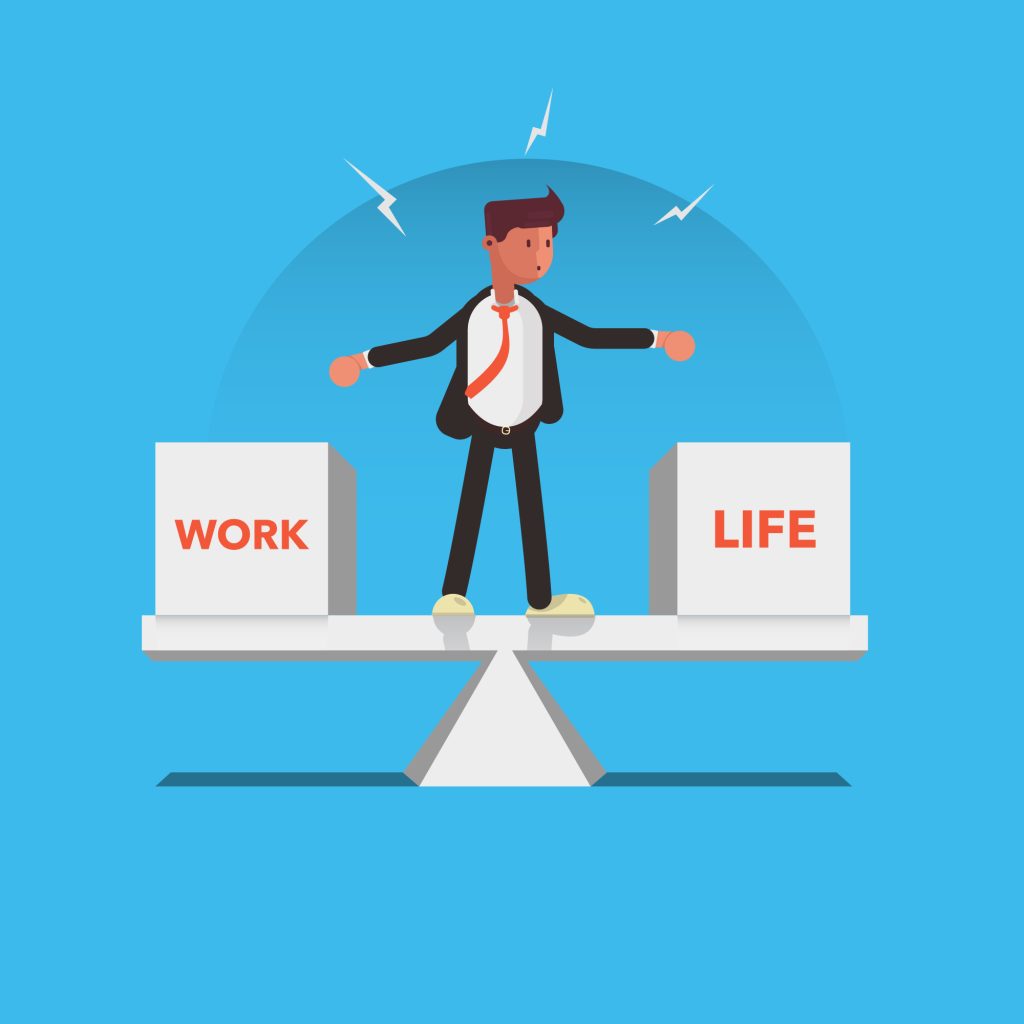In today’s fast-paced world, the lines between work and personal life have become increasingly blurred. With the rise of remote work, digital connectivity, and the constant demand for productivity, achieving balance between work and personal life has become a pressing concern for many individuals. The pressure to excel in both professional and personal spheres often leaves people feeling overwhelmed, stressed, and burned out.
However, finding that delicate balance is not only achievable but essential for maintaining well-being and long-term success. In this article, we will explore the current hot trends surrounding work-life balance and offer practical strategies that can help you maintain harmony between your professional and personal commitments.

The Emerging Importance of Work-Life Balance in Today’s World
Work-life balance has always been a popular topic, but its importance has grown exponentially in recent years. With the pandemic, the way we work and live has drastically changed. Remote work, flexible schedules, and the increasing availability of digital tools have provided greater flexibility, but they have also created new challenges in separating work from home life. The rise of “always-on” work culture—where employees are expected to be available beyond traditional office hours—has exacerbated this issue.
In fact, studies show that employees working remotely report experiencing higher levels of stress and difficulty disconnecting from work. As we adapt to these new ways of working, it’s becoming increasingly clear that achieving balance between work and personal life is not just a luxury but a necessity for mental and physical health.
Why Achieving Work-Life Balance is Crucial for Success
Many people mistakenly believe that achieving a work-life balance means compromising on success. However, the opposite is true. Here’s why striking a healthy balance between work and personal life is crucial for your overall success:
1. Improved Mental Health and Well-being
Chronic stress caused by work overload can lead to burnout, anxiety, and depression. When we are overworked, we have less time for self-care and activities that promote well-being. Taking time for family, hobbies, or relaxation is essential for reducing stress, improving mental health, and recharging our batteries.
2. Enhanced Productivity and Focus
It may seem counterintuitive, but stepping away from work actually boosts productivity. Taking breaks, engaging in physical activities, and spending time on personal interests help refresh the mind, allowing us to return to work with a clearer focus. According to research from the Harvard Business Review, employees who maintain a work-life balance are more engaged and perform better at work.
3. Stronger Relationships
Work-life balance doesn’t just affect your own well-being; it impacts your relationships with family, friends, and colleagues. Spending quality time with loved ones and nurturing personal relationships is essential for a fulfilling life. Moreover, a balanced approach to work allows for healthier work relationships, where employees feel supported and valued.
4. Long-Term Career Sustainability
Burnout from overwork can lead to job dissatisfaction, decreased performance, and even career changes. Achieving balance in the long term helps you avoid these negative outcomes and build a sustainable career. It’s not about working hard—it’s about working smart and maintaining a steady, healthy approach to career development.
Key Trends in Achieving Work-Life Balance
As the conversation around work-life balance continues to evolve, several trends have emerged that are shaping how individuals and organizations approach this issue. Here are some of the most significant trends driving change in this space:
1. Remote and Hybrid Work Models
The pandemic sparked a massive shift towards remote work, and many companies are now adopting hybrid models that offer employees the flexibility to work from home or the office. This change has given employees more control over their schedules and environment, but it has also made it harder to separate work from personal life.
- Tip: Set clear boundaries by establishing a designated workspace at home and setting specific work hours. Avoid working from the couch or bedroom to maintain a clear distinction between work and relaxation zones.
2. Flexible Work Hours
Flexible hours allow employees to adjust their schedules based on personal needs, leading to greater satisfaction and productivity. For example, some companies offer compressed workweeks, where employees work longer hours in fewer days, while others allow flexible starting and finishing times.
- Tip: Negotiate flexible hours with your employer if possible. This can allow you to better manage personal commitments while still meeting work obligations.
3. The Rise of Mental Health Awareness
As the importance of mental health grows, more individuals are prioritizing their well-being by incorporating mental health practices into their daily routines. Practices like mindfulness, meditation, and stress reduction techniques have become mainstream, helping people manage their mental health and achieve better work-life integration.
- Tip: Integrate mindfulness into your daily routine. Even five minutes of deep breathing or meditation can help reduce stress and improve mental clarity.
4. Technology Detox and Digital Boundaries
With the constant connectivity that comes with smartphones and digital tools, many people are starting to embrace digital detoxes. Disconnecting from work emails and social media outside of office hours has become a key trend for maintaining work-life balance and mental well-being.
- Tip: Turn off notifications after work hours and set “tech-free” time for activities like family meals or personal hobbies. This will help you disconnect and recharge.
Practical Steps to Achieve Balance Between Work and Personal Life
Achieving a healthy work-life balance requires intentional effort, but it is absolutely possible with the right strategies. Here are some actionable steps you can take to achieve a more balanced life:
1. Set Clear Boundaries
One of the most important steps in achieving work-life balance is setting boundaries between your professional and personal life. When working remotely, it’s especially important to create physical and mental separation between the two.
- Action Step: Create a dedicated workspace and set fixed working hours. Communicate your boundaries to family members and colleagues to ensure you’re not interrupted during focused work time.
2. Prioritize and Delegate Tasks
Often, we feel overwhelmed because we try to do everything ourselves. Learning to prioritize tasks and delegate when possible can help you manage your workload effectively. Not every task needs to be done by you, and some can be shared with others.
- Action Step: Make a daily to-do list and identify the most important tasks that need to be completed first. Delegate or defer less critical tasks to free up time for personal activities.
3. Schedule Time for Yourself
In the midst of busy work schedules and family commitments, it’s easy to forget to make time for yourself. Self-care is essential for maintaining balance and mental health. Whether it’s reading, exercising, or enjoying a hobby, carving out personal time should be a priority.
- Action Step: Schedule regular “me time” on your calendar, just like any other work meeting or appointment. Treat it as a non-negotiable part of your day.
4. Learn to Say No
Overcommitting to both work and personal obligations is a common cause of imbalance. Learning to say no to additional responsibilities or invitations can help you maintain your balance and avoid overextending yourself.
- Action Step: Practice saying no when necessary. Politely decline invitations or tasks that do not align with your priorities, and be comfortable setting boundaries with colleagues and friends.
5. Embrace Flexibility
Achieving balance doesn’t mean rigidly adhering to a set schedule every day. Life is dynamic, and sometimes you need to adapt your plans. Embrace flexibility by allowing for adjustments and being compassionate with yourself when things don’t go according to plan.
- Action Step: If something urgent comes up, adjust your schedule accordingly and give yourself permission to be flexible. Prioritize what matters most, and let go of perfectionism.
6. Make Health a Priority
Physical and mental health are key to achieving work-life balance. Without a healthy body and mind, it’s challenging to perform at your best in either area. Make time for regular exercise, sleep, and healthy meals to ensure that you’re functioning at your highest potential.
- Action Step: Integrate regular physical activity into your routine, whether it’s a daily walk or a workout. Ensure you’re getting enough sleep and eating nutritious meals to fuel both your body and mind.
Conclusion
Achieving balance between work and personal life is not about achieving perfection—it’s about managing your time, setting boundaries, and prioritizing what truly matters. By adopting flexible work practices, setting clear boundaries, and committing to self-care, you can create a more harmonious life that allows you to thrive both at work and at home.
The journey to work-life balance is unique for each individual, but the key takeaway is that it is possible. With intentional effort and practical strategies, you can take control of your time, reduce stress, and enhance your overall well-being.
Reference
- 5 Powerful Reasons to Make Reflection a Daily Habit, https://missiontolearn.com
- How Self-Reflection Benefits Your Mental Health, https://www.verywellmind.com
- Why Is Self-Reflection Important For Personal Growth? https://benebynina.com









